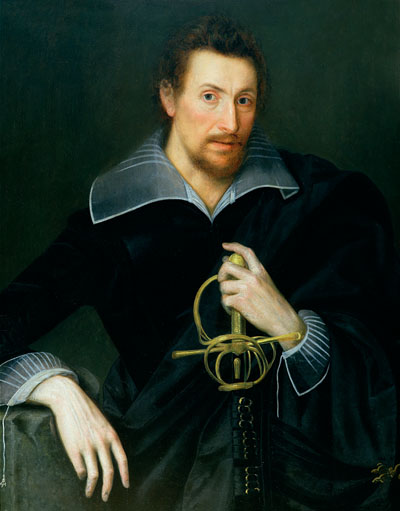Building on the success of his acclaimed Radio 4 series and bestselling book A History of the World in 100 Objects, Neil MacGregor has now successfully narrowed down the format. Selecting 20 objects that he suggests formed part of ‘the mental scenery’ of Shakespeare and his contemporaries, he exploits what he calls ‘the strange potency of things’ to illuminate the world they lived in.
Some of the items chosen initially appear almost perversely mundane. The cloth cap that was the prescribed headgear for all non-gentrified Elizabethan males is scarcely intrinsically beautiful, but under MacGregor’s scrutiny this humble garment proves satisfyingly informative. Elizabethans would have known at a glance that the wearers of such caps were from the lower echelons of society who, when gathered together, were apt to prove unruly. Because of the potential threat their owners posed to public order, ‘those woollen caps could carry menacing associations — not very different from hoodies today.’ Shakespeare was clearly alert to these connotations, as references in his works make clear.
The age of Shakespeare was a time of upheaval and uncertainty. Because Elizabeth I had no acknowledged heir, for nearly 50 years Englishmen feared that on her death a disputed succession would cause civil war. Understandably, troubles arising from contested claims to the throne are a frequent theme in Shakespeare’s plays.
Exploration expanded the horizons of Elizabethan England, but also exposed the kingdom to dangers. MacGregor examines the medal commemorating Francis Drake’s circumnavigation of 1577-80. The existence of such an artefact denotes pride in Drake’s exploits, but the fact that it was cast from silver he plundered from Spanish settlements in South America helps explain why, by the time the medal was created in 1589, England and Spain were at war.
Shakespeare’s lifetime saw some scientific progress, but the boundaries between science and magic remained alarmingly blurred. Dr John Dee was a distinguished mathematician and geographer who produced serious works of scholarship, but he aspired above all to be a Prospero figure. MacGregor devotes a chapter to the magical mirror with which Dee sought to conjure spirits, supernatural experiments that intermittently landed him in trouble. Made of obsidian polished to a high sheen by hours of rubbing with an abrasive paste of bat droppings, the object probably once belonged to a pre-Colombian Aztec ruler who, like Dee, wished to know the future.
Violence was an integral part of Elizabethan life. A ‘blade’ — the term first used in Romeo and Juliet to denote a stylish young man — automatically wore a sword as he went about town, as MacGregor explains in his essay on one such weapon recovered from the Thames foreshore. Given the prevalence of arms, every minor brawl had a chance of proving deadly. Shakespeare himself was allegedly involved in a street attack on a man who feared for his life after being set upon by four assailants.
Legalised violence also had many victims. Executions were public spectacles, and hangings, drawings and quarterings attracted large crowds. Discussing the reliquary containing the shrivelled eyeball of one Catholic martyr who suffered this fate, MacGregor contends that exposure to such horrors inured Shakespeare’s audience to frightful scenes in his plays. One Elizabethan MP recalled how, as a childhood treat, his grandfather took him to watch a convicted poisoner being boiled alive, the Tudor equivalent of an outing to see 101 Dalmatians. Perhaps it is true that someone reared upon such sights would not have flinched when watching the blinding of Gloucester on stage.
MacGregor delights in modern analogies. Pedlars who carried news and gossip along with their wares provided ‘a sort of Elizabethan Twitter feed’; an elaborate glass goblet fashioned using Venetian techniques by émigré craftsmen is like today’s ‘must-have designer handbag’ manufactured to Italian specifications in the Far East. Taking plays on tour when London theatres were closed by plague was adopting ‘what we might now call a national outreach strategy’.
MacGregor does not focus on Shakespeare as an individual, declining to speculate about his religion even when writing about the chalice used in the playwright’s parish church. Instead, by picking out passages in the plays relating to the items under discussion, MacGregor highlights what these things would have meant to a man of that era. The resulting elegant collection of essays provides stimulating insights on the objects selected, and on Shakespeare’s works themselves.






Comments